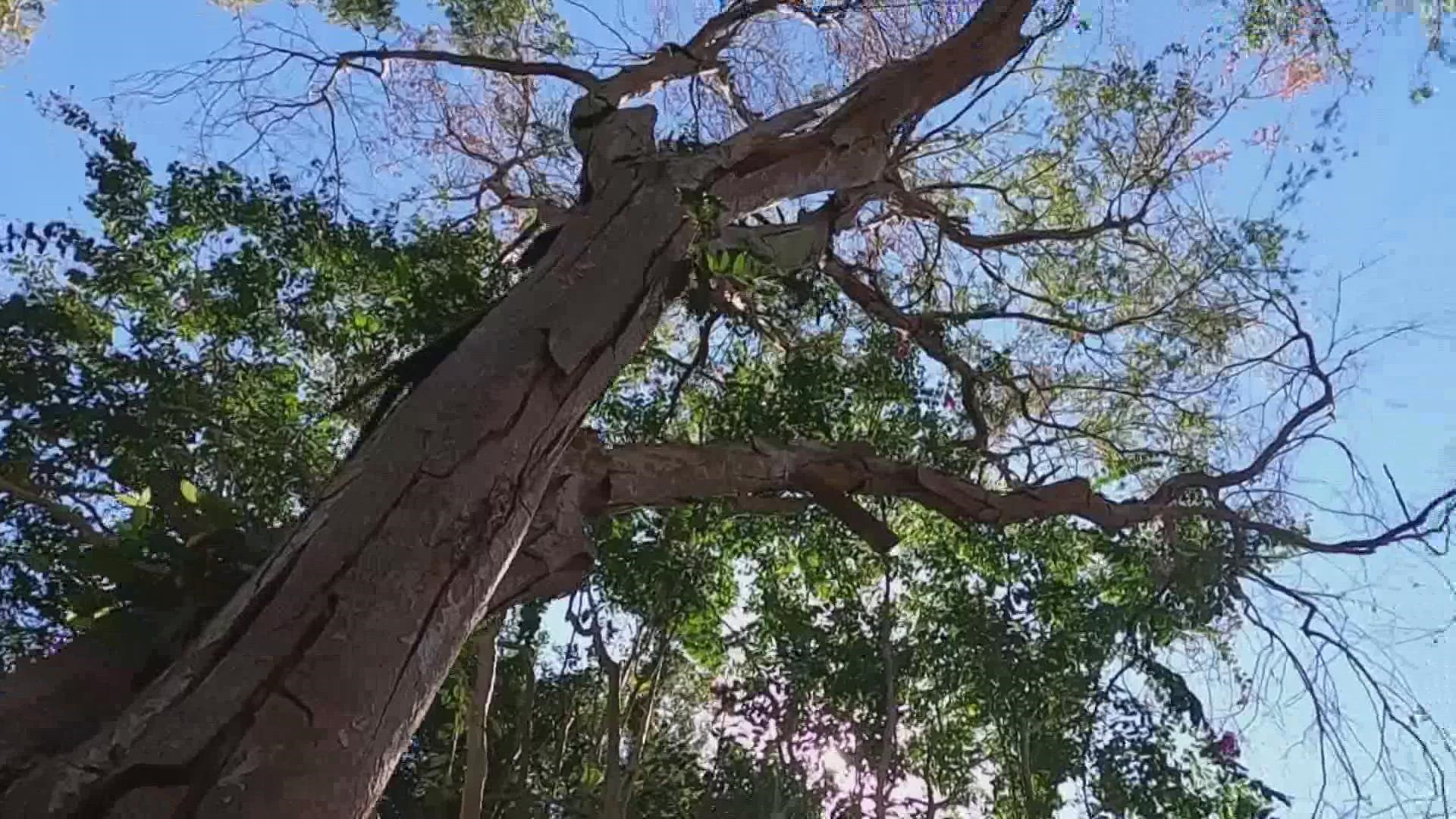DALLAS — The winter freeze this February was a tough test for trees across North Texas, and we're still seeing the impact months later. If your trees appear to be dying now, there's a good chance it might be an after-effect from the February freeze.
But before you start looking for warning signs in your trees, you might have a common question: What tree do I have anyway?
North Texas covers two main ecoregions, divided east and west: Cross Timbers on the west and Blackland Prairie on the east. But both regions feature similar trees.
In North Texas, some of our most common trees are oaks, pecans and elm trees.
Oaks: Live oaks, post oaks and blackjack oaks are among the most common oak trees in Texas. All three types of oak trees can grow to more than 50 feet tall. Live oaks are notable for a low, dense crown that can spread more than 100 feet. Oak leaves are typically oval or elliptical and 2-4 inches long.
Pecans: Another large tree, some pecan trees can grow to 120 feet tall with a truck of four feet in diameter. The most obvious indicator? Yep, you guessed it: It produces pecans, which ripen in the fall.
Elm: Cedar elms are another common tall tree in North Texas, growing up to 75 feet tall. Their branches form a more narrow canopy than what you might see in a pecan or oak tree. A cedar elm's leaves are about 1-2.5 inches long, and the leaves can turn gold to orange-red in the fall.
Those three types of trees are just a starting point, though. North Texas has a wide variety of tree types, including invasive species.
Fortunately, Texas A&M Forest Service makes it easy to identify that tree in your backyard.
They have a website where you can identify your tree by the shape and description of its leaf.
For example, you can start with the basic description. Does your tree produce heart-shaped leaves? A few clicks later and you'll have it confirmed: It's a red mulberry.
Give it a try here:


